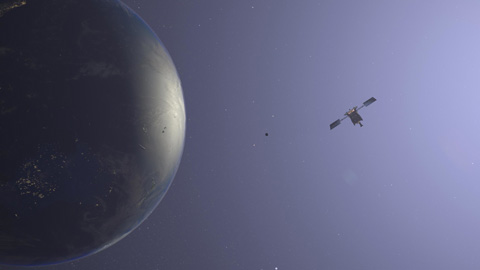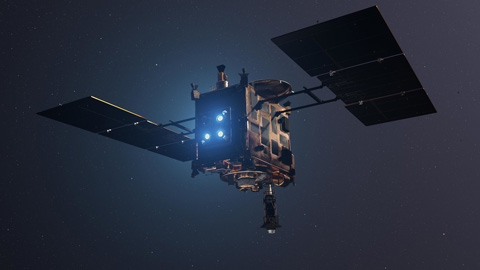Japanese Space Agency Enlists Crane A&E for Critical Mission
Japanese Space Agency Enlists Crane A&E for Critical Mission

After nearly five years in space, scientists and members of Japanese space agency, JAXA, are hoping a July 11, 2019, touchdown on an asteroid 180 million miles away will produce historic information.
Japanese space shuttle Hayabusa 2, on Dec. 3, 2014, left earth on a six-year journey. The shuttle’s mission was to return vital information that could help scientists better understand the history of our solar system and the origin of life on earth.
JAXA targeted 162173 Ryugu – a primitive carbonaceous, 900-meter wide asteroid.
The Hayabusa 2 uses Crane’s Modular Power SMRT DC-DC converters to power its laser range finder, and on Sept. 21, 2019, the space probe ejected its first two rovers onto the asteroid. Space rock was first collected during an initial touchdown in February 2019.
Crane A&E provides Interpoint branded standard DC-to-DC converters

and EMI filter modules for space industry use. A DC-to-DC converter is an electromechanical device that converts one source of direct current from one voltage level to another.
JAXA targeted asteroid Ryugu for its uniqueness. Carbonaceous asteroids are expected to preserve the most pristine materials in the solar system. Hayabusa 2 – an unmanned spacecraft roughly the size of a large refrigerator – fired an impactor into the asteroid in April 2019, stirring up material that hadn’t previously been exposed to the atmosphere.
JAXA said this was the first time a probe had ever collected particles below an asteroid’s surface. Scientists hope collected samples include previously unstudied organic materials and water from 4.5 billion years ago.
In addition to collecting space rock samples, Hayabusa 2’s small rovers are investigating the asteroid’s surface to help understand the environmental and geological context of collected samples.
Crane A&E is proud to play a role in this monumental accomplishment in space exploration.